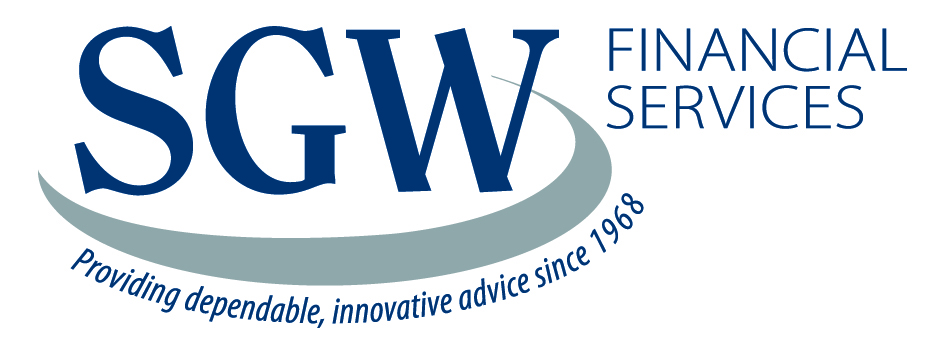How your super is taxed differs depending on your age, contributions and other factors, so it’s important to understand the different tax implications that could apply to your nest egg.
Super can be a tax-effective way of saving for retirement. Generally, money invested in super is taxed at a lower rate than your personal income tax rate. It’s structured in this way to encourage workers to save for their retirement.
The money you invest in super can be taxed at four different stages: when the money goes in (super contributions), while it’s in your super fund (investment earnings), when you withdraw it (super benefits) and when you die (super death benefits).
But the ATO’s tax treatment of your super savings is different at each of these stages. Below we explain the tax implications of each stage.

Tax on super contributions
The amount of tax you’ll pay on money going into your fund (super contributions) depends on the type of super contribution and your circumstances. Here are some of the key factors to consider.
How concessional contributions are taxed
Concessional (before tax) super contributions include employer super contributions made on your behalf, any salary sacrifice contributions you make, or any personal contributions that you claim a tax deduction on in your tax return. These contributions are taxed at 15% when they are received by your super fund (up to a cap of $27,500 per year), provided you earn less than $250,000 annually.
If your concessional contributions exceed the concessional contributions cap of $27,500 per year, you might be able to use unused cap amounts from previous years to reduce or eliminate the excess. If eligible, the tax office will automatically calculate this. If there is an excess it is included in your tax return and taxed at your marginal tax rate (less an allowance for the 15% already withheld by your super fund). An excess concessional contribution charge will also apply.
How non-concessional contributions are taxed
Non-concessional (after tax) super contributions aren’t subject to tax as they are made with money you’ve already paid tax on (such as a regular salary payment). Types of non-concessional contributions include contributions your spouse makes to your super or personal contributions that you don’t claim as a tax deduction.
There is a non-concessional contribution cap too, which, for people under 75 is $110,000 a year and up to three years of annual caps ($330,000) under bring-forward rules if you’re eligible. However, penalties may apply if this cap is exceeded.
How low-income earners are taxed
If you’re a low-income earner (earning up to $37,000 per year), the low-income superannuation tax offset makes sure you don’t pay a higher rate of tax on your super contributions than your income tax rate. The offset will be paid directly to your super account and the payment will be equal to 15% of your concessional contributions for the year, capped at a maximum of $500.
How high-income earners are taxed
If you earn more than $250,000 a year, concessional contributions are generally taxed at an additional 15%, bringing the total tax on these contributions to 30%; however, this is still typically less than the marginal income tax rate of 45%.
If you don’t quite earn $250,000 but your total income, when your concessional contributions are included, exceeds $250,000, only the concessional contributions which make your total income exceed $250,000 are subject to this additional tax.
Tax on super investment earnings
The tax that applies to super investment earnings varies depending on whether your super is in accumulation phase or pension phase.
How super investment earnings in accumulation phase are taxed
When you’re still working and growing your super, the investment earnings generated by your super are taxed at a maximum rate of 15%. But if the earnings are capital gains from an asset owned through your super for more than 12 months and then sold, the tax on the gain is effectively reduced to 10%.
The amount of tax your fund pays may also be reduced by tax deductions or tax credits that apply to some types of investments.
How super investment earnings in pension phase are taxed
If you’re drawing a retirement income stream from your super, then the investment earnings are exempt from tax, including capital gains.
This tax exemption on investment earnings also applies if you commenced the income stream due to permanent incapacity. However, if you’re drawing a transition to retirement income stream the investment earnings are still taxed at 15% until you turn 65 or notify us that you have met a prescribed condition of release.
A limit of $1.7 million (in 2022/23) broadly restricts the amount you can transfer into the tax-exempt retirement pension phase.
Tax on super withdrawals
Once you’ve met a condition of release, you can start accessing your super in a number of ways. The way these withdrawals are taxed can vary based on a number of factors, discussed below.
Tax when you withdraw your super as an income stream
If you access your super as an income stream and you are age 60 or over, your pension payments will be tax free (some government/public sector fund pension payments are still taxable).
If you have reached your preservation age, but you’re under age 60 and receiving an income stream (for example, you’ve retired after reaching preservation age), no tax is payable on the tax-free component of your pension payments (which is typically made up of your non-concessional contributions and any government co contributions) but tax may be payable on the taxable component of your pension payments (which is typically made up of your concessional contributions and investment earnings). This taxable component will be added to your income and taxed at your income tax rate less a tax offset equal to 15% of the taxable portion of the payment.
Tax when you take a transition to retirement income stream
Income payments from transition to retirement (TTR) income streams (where you can draw down from your super if you’ve reached preservation age but are still working) are taxed in the same way as other retirement income streams depending on your age, as explained above.
The returns on the assets supporting a TTR income stream are taxed at a maximum of 15%, the same as super investment earnings. The earnings on the TTR income stream become tax exempt as explained above when you advise the super fund of your retirement or reach age 65.
Tax when you withdraw your super as a lump sum
If you are aged 60 or over, super amounts that you access as a lump sum are generally tax free.
If you’ve reached your preservation age, but are under age 60, no tax is payable on the tax-free component of your withdrawal.You can also withdraw up to $230,000 from your taxable component without paying any lump sum tax in 2022/23 (this is known as the low rate cap amount).
Any amount you withdraw over the low rate threshold will be taxed at 17% (including the Medicare levy) or your income tax rate, whichever is lower.
Tax when you withdraw your super in other circumstances
Under some limited circumstances, you can withdraw a lump sum from your super before preservation age. In these cases, all of the taxable component of any withdrawal will be taxed at 22% (including the Medicare levy) or your income tax rate, whichever is lower – that is, the low rate cap amount is not available.
Tax on super death benefits
Different tax rates apply to super death benefits depending on whether they are paid as a lump sum, income stream (or mixture of both), and if the beneficiary (or beneficiaries) who receive your super death benefits are classified as tax dependants.
Tax dependants include a current or former spouse or defacto, any children you have under age 18 or any other financial dependants. It’s also important to understand that different tax treatments apply to the taxed and untaxed element of your super.
Paying super death benefits as a lump sum
|
Type of beneficiary |
Tax-free component |
Tax rate on taxable component – taxed element |
Tax rate on taxable component – untaxed element |
|
Tax dependant |
Tax-free |
Tax-free |
Tax-free |
|
Non-tax dependant |
Tax-free |
Maximum tax rate of 15% (plus the Medicare levy) |
Maximum tax rate of 30% (plus the Medicare levy) |
(An untaxed element generally only arises when life insurance proceeds form part of the lump sum withdrawal)
Paying super death benefits as an income stream
Only dependants of the deceased can receive death benefits as an income stream.
|
Age of beneficiary and deceased at time of death |
Tax rate on taxable component – taxed element |
|
Beneficiary is 60 or older or the deceased was 60 or older |
Tax free |
|
Beneficiary is under 60 and the deceased is under 60 |
Your marginal tax rate minus a 15% tax offset1 |
|
(Tax-free component of income payments is paid tax free to a beneficiary of any age.) |
|
1 When the beneficiary turns age 60 the income stream becomes tax free.
Source: AMP July 2022
Important:
This information is provided by AMP Life Limited. It is general information only and hasn’t taken your circumstances into account. It’s important to consider your particular circumstances and the relevant Product Disclosure Statement or Terms and Conditions, available by calling 02 6947 2866, before deciding what’s right for you.
All information in this article is subject to change without notice. Although the information is from sources considered reliable, AMP and our company do not guarantee that it is accurate or complete. You should not rely upon it and should seek professional advice before making any financial decision. Except where liability under any statute cannot be excluded, AMP and our company do not accept any liability for any resulting loss or damage of the reader or any other person. Any links have been provided for information purposes only and will take you to external websites. Note: Our company does not endorse and is not responsible for the accuracy of the contents/information contained within the linked site(s) accessible from this page.
